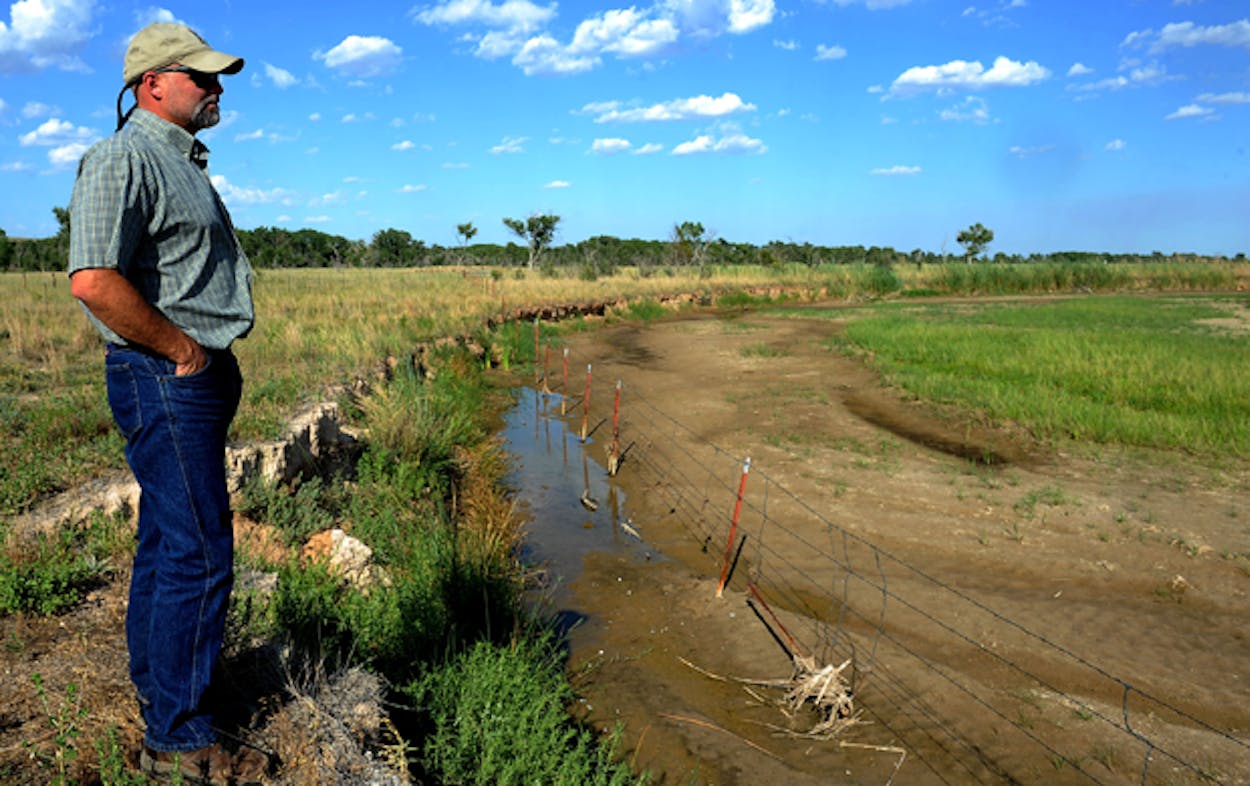PBS NewsHour kicked off its series on climate change Thursday with a segment on the Texas drought. Hari Sreenivasan dropped by Spicewood Beach, the first Texas town to run out of water when its wells failed in January. Now, the town’s water arrives once a day in a 7,000-gallon truck. Sreenivasan also went to Robert Lee, which is building an emergency pipeline to another town because its reservoir is almost bone dry.
One thousand towns and cities in Texas restricted their water use in 2011, and seventeen of those systems could run out water in the next six months, Saskia de Melker wrote in an article accompanying the video segment.
“Mark Twain said that whiskey is for drinking and water is for fighting and he was prophetic because that fight is accelerating in Texas today,” said Andrew Sansom, director of the River Systems Institute at Texas State University.
PBS’s report comes the same day there was official word that the 2011 Texas drought was the costliest in history, with agricultural losses totaling $7.62 billion, $2.4 billion more than estimated. Travis Miller, an agricultural economist at Texas A&M, minced no words over the drought’s severity:
No one alive has seen single-year drought damage to this extent. Texas farmers and ranchers are not strangers to drought, but the intensity of the drought, reflected in record high temperatures, record low precipitation, unprecedented winds coupled with duration, all came together to devastate production agriculture.
StateImpact Texas listed the total losses from the 2011 drought, citing the AgriLife Extension report:
- Livestock: $3.23 billion
- Lost hay production value: $750 million
- Cotton: $2.2 billion
- Corn: $736 million
- Wheat: $314 million
- Sorghum: $385 million
And if that’s not enough drought-related headlines in one day, State climatologist John Nielsen-Gammon cautioned lawmakers on Thursday that the drought lives on, despite recent heavy rains in urban areas, Laylan Copelin reported at the Austin American-Statesman. “The people of Texas are going to tend to forget a drought is still going on in many parts of Texas,” he said. But the state is still firmly in a “long-term drought cycle,” thanks to La Niña.
Things have gotten a bit better lately, however: The U.S. Drought Monitor showed that on Oct. 4, 88 percent of the state was in “exceptional drought.” Now, only eighteen percent of the state is. But conditions have actually worsened over the winter in some areas, including parts of the Panhandle and far West Texas, Copelin wrote.







